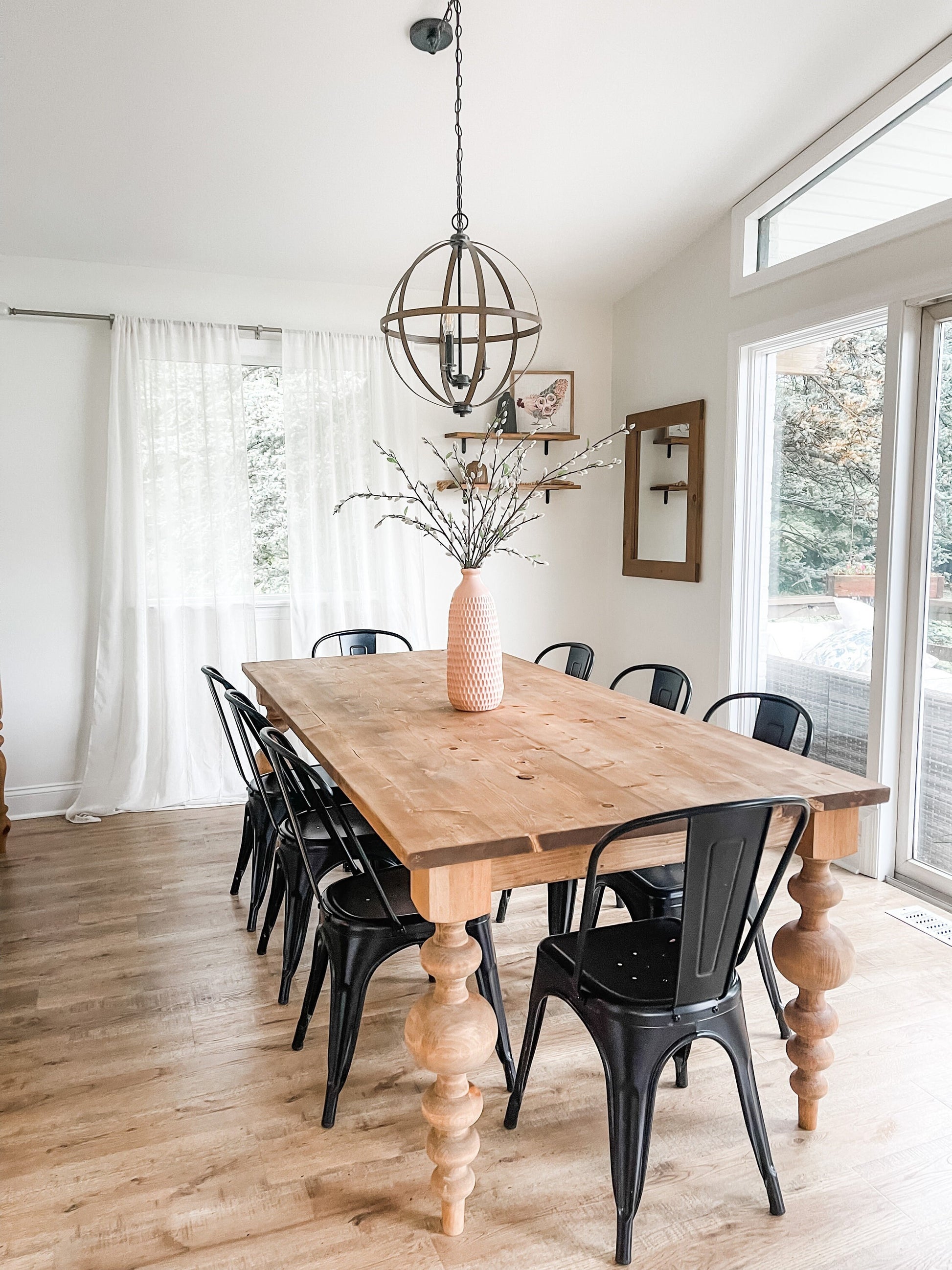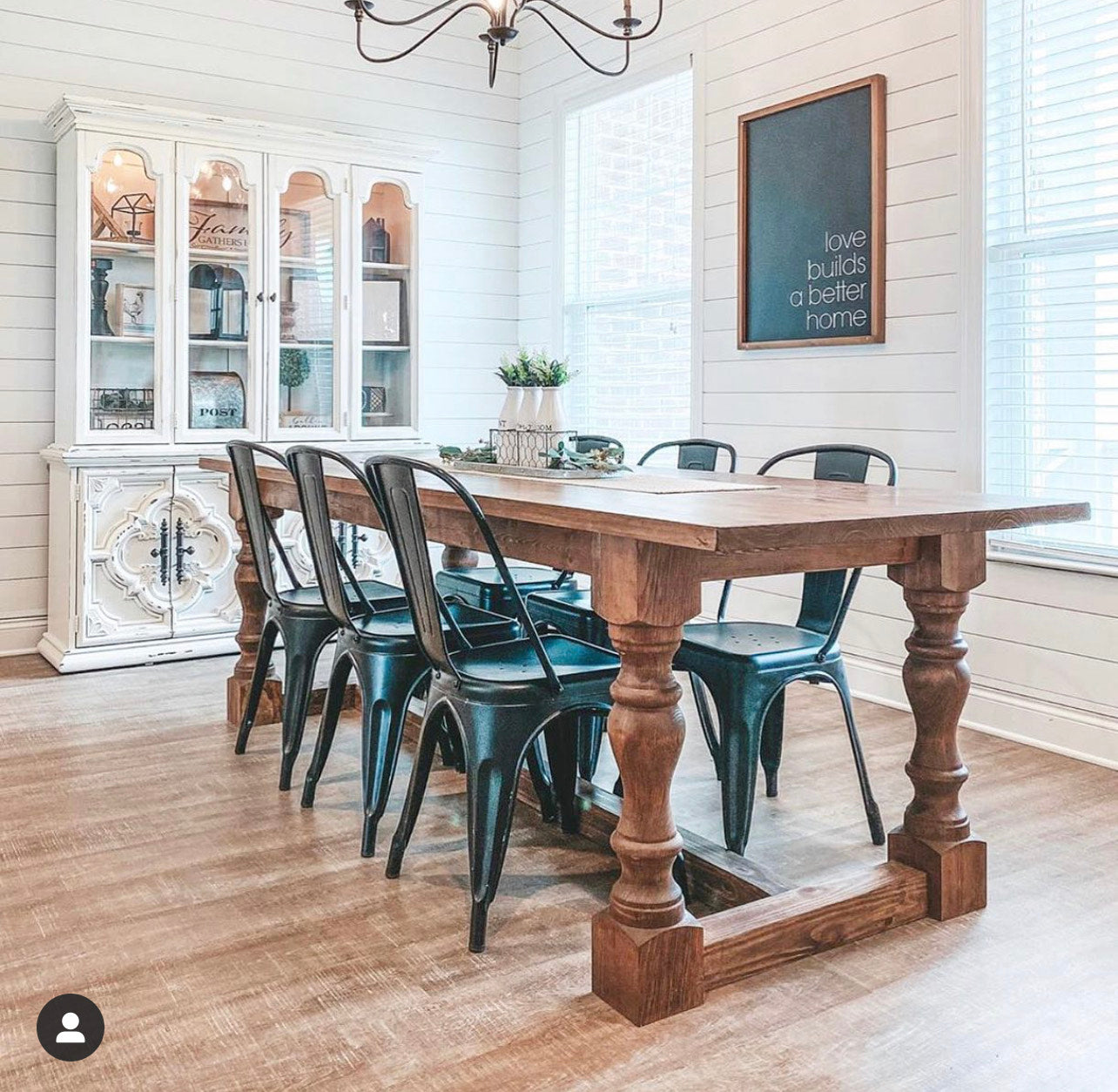How to Choose the Perfect Dining Room Table Legs for Your Home
How to Choose the Perfect Dining Room Table Legs for Your Home
Blog Article
From Conventional to Modern: Find the Perfect Eating Area Table Legs for Your Design
The choice of dining-room table legs plays an essential duty in specifying the overall character of your area, bridging the gap between standard workmanship and modern-day visual appeals. While classic layouts such as cabriole and turned legs evoke a sense of classic class, contemporary designs like barrette and geometric alternatives provide an opportunity for striking visual interest. Examining the best balance in between these designs requires a nuanced understanding of your existing design and individual preference. As you take into consideration these aspects, the inquiry remains: exactly how can you flawlessly integrate these diverse leg designs to produce a harmonious eating experience?
Understanding Table Leg Styles
The range of dining-room table leg designs can dramatically influence both the looks and performance of the room. Each leg design adds distinct visual aspects and useful attributes, satisfying varied style choices and use demands. Understanding these styles is essential for choosing the right table that aligns with your overall interior layout vision.
As an example, conical legs offer a tidy, classic appearance that can enhance an area's elegance, while pedestal bases provide security and make best use of legroom, making them suitable for smaller rooms. Barrette legs, a trademark of mid-century contemporary layout, present a commercial panache, permitting a ventilated, open feeling. Likewise, trestle legs stimulate rustic beauty, providing durable support and a sense of timelessness.
Wood legs can bring heat and structure, whereas metal options commonly convey a smooth, contemporary vibe. Inevitably, recognizing table leg designs is necessary for producing a cohesive dining location that mirrors personal design while making certain usefulness and convenience.
Typical Table Leg Options
When picking dining-room table legs, typical choices often embody classic elegance and craftsmanship. These styles show a rich heritage and a commitment to high quality, making them optimal for those who appreciate traditional aesthetics.
Among the most renowned typical leg designs is the cabriole leg, identified by its elegant rounded shape. This design typically features attractive makings and is most commonly located in Queen Anne and Chippendale furnishings. One more popular option is the transformed leg, which boasts a series of smooth, rounded forms that provide a classic look while preserving stability.
Additionally, the straight leg, while basic, supplies a unadorned and tough structure that can blend seamlessly with a selection of tabletop designs. For those attracted to ornate detailing, claw-and-ball feet legs evoke a sense of splendour and can act as a sensational focal point in any kind of eating room.
Lastly, pedestal bases, although not purely legs, supply an alternative typical option that enables ample legroom and can be magnificently Visit Your URL carved. Each of these conventional leg designs adds to the general atmosphere of a dining-room, marrying function with visual charm.

Modern Table Leg Layouts
Modern table leg styles provide a varied variety of designs that highlight clean lines and cutting-edge materials. These styles usually focus on performance while acting as striking centerpieces within an eating area. Minimalist aesthetics are common, with legs crafted from materials such as metal, glass, and engineered wood, which add to a contemporary and airy feel.
One prominent style is the barrette leg, defined by its slender, tapered framework that gives security without frustrating the tabletop (dining room table legs). This style is commonly discovered in mid-century modern-day furnishings and can easily match numerous table forms. Another fad is the usage of geometric forms, where legs may tackle unbalanced or angular kinds, adding aesthetic interest and a touch of virtuosity

Blending Styles for Distinct Rooms
Often, property owners look for to produce unique dining areas that mirror their personal design by blending numerous layout aspects. This approach enables for the incorporation of varied appearances, resulting in an unified yet distinct setting. For example, combining a rustic wood table with streamlined, modern metal legs can develop an attractive contrast that boosts the space's total charm.
Additionally, incorporating vintage table legs with modern table tops can evoke a feeling of history while keeping a contemporary perceptiveness. Such combinations not just showcase individual taste however likewise motivate creativity, allowing homeowners to curate a space that feels both individual and inviting.
Color plays an essential role in this blending process; choosing table legs that match or contrast with the existing color design official site can enhance aesthetic passion. For instance, whitewashed legs can soften the daring of a dark table surface, producing a well balanced visual.
Tips for Picking the Right Legs
Selecting the right table legs is important for accomplishing both performance and visual charm in your dining area. Begin by Learn More thinking about the total style of your room. Traditional setups gain from legs that include detailed makings or turned layouts, while modern areas may ask for streamlined, minimal designs.
Next, examine the height and stability of the legs. dining room table legs. Conventional eating tables vary between 28 to 30 inches in elevation, so guarantee the legs match this dimension for comfort. Furthermore, robust materials, such as hardwood or steel, can improve stability and durability
Examine the leg form as well-- alternatives include straight, tapered, or stand styles. Straight legs supply a traditional look, while tapered legs can add a touch of beauty. Pedestal bases offer enough legroom and are excellent for smaller sized spaces.
Verdict
In summary, picking the optimal dining area table legs needs mindful consideration of both typical and modern styles. By balancing leg design, elevation, and material with the general decor, a natural and welcoming environment can be accomplished.
The variety of eating room table leg designs can substantially influence both the looks and functionality of the area. Eventually, recognizing table leg styles is essential for creating a cohesive dining area that mirrors personal style while making certain functionality and comfort.One of the most iconic typical leg styles is the cabriole leg, identified by its elegant bent form. Straight legs use a classic appearance, while conical legs can add a touch of style.In summary, picking the optimal eating space table legs needs mindful factor to consider of both modern and conventional designs.
Report this page